While it may come as a surprise to learn that some innocent-looking plants can kill us if we simply touch them, we humans are used to fleeing from certain creatures that we identify as potentially toxic. And yet, some of the most venomous animals we look at here are not the ones that first spring to mind, and the list even includes some that we might expect to be completely harmless.
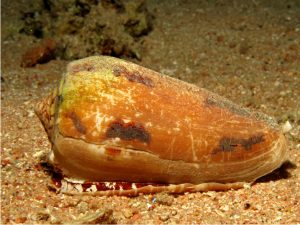
Geography cone snail (Conus geographus)
At first glance, they are just pretty conical shells. But Conidae, or cone snails, with several hundred species, hide a secret: a harpoon connected to a venom gland that they use to defend themselves and hunt their prey, and which in some species can kill a human. The geography cone’s cocktail of 200 toxins is so potent that this marine predator has been nicknamed the “cigarette snail” because it is said that if you are stung by this creature, you will only have time to smoke a cigarette before you die. This cone snail has a second secret weapon: it expels a cloud of insulin, which it uses to stun fish before attacking them.
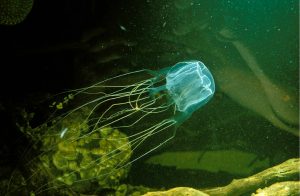
Australian box jellyfish (Chironex fleckeri)
While jellyfish are a nuisance to beachgoers all over the world, some tropical jellyfish are a mortal danger. One such example is the box jellyfish, of which there are about 50 species. The largest of these, the Australian box jellyfish, or sea wasp, which is the size of a football and has tentacles three metres long, is often considered the deadliest, in keeping with its skull-like appearance. But the tiny, fingernail-sized Malo kingi and Carukia barnesi are not far behind. The sting from these creatures is so painful that victims can go into shock and die within minutes.
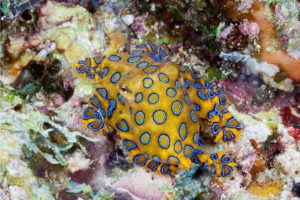
Blue-ringed octopus (género Hapalochlaena)
You wouldn’t normally expect an octopus to pose a threat either, but brightly coloured markings on an animal are often a warning, and this is the case with the blue and black circles on the four species of Hapalochlaena. These small tropical octopuses found in the Pacific and Indian Oceans are not aggressive, but may bite if provoked. Although often painless, the bite injects several compounds, including tetrodotoxin, popularly known as “zombie poison” because it causes total paralysis, including of the respiratory system, leading to death.

Golden dart frog (Phyllobates terribilis)
If you had to choose one animal as the most venomous on the planet, a good candidate would be the largest of the dart-poison frogs (dendrobatids), amphibians of tropical America with almost 200 species. The golden dart frog, which can range in colour from green to orange, does not sting or bite; its skin is bathed in batrachotoxin to protect it from predators. Some indigenous groups in Colombia use it to coat the tips of darts and arrows. Interestingly, the frogs need to eat certain insects to produce the venom, and captive-bred frogs are non-toxic.

Inland Taipan (Oxyuranus microlepidotus)
Of the 600 or so species of venomous snakes in the world, it is not easy to pick one as the most dangerous, but it is child’s play to identify the place where it is most likely to be found: Australia. The continent is home to the 11 most venomous snakes, the most poisonous of which is the inland taipan, whose venom is around 20 times more potent than that of a cobra and 400 times more powerful than that of a rattlesnake. It is estimated that the venom from one large bite would be enough to kill over 100 people or 250,000 mice. Despite this, it is a shy and docile snake that rarely attacks. Its coastal relative (Oxyuranus scutellatus) is only slightly less venomous but more aggressive.

Sydney funnel-web spider (Atrax robustus)
Despite widespread hysteria about spiders, only about thirty of the more than 43,000 species can kill a human, and the most dangerous may not be the best known. Australian funnel-web spiders often top the list of deadliest spiders, in competition with Brazilian wandering spiders of the genus Phoneutria. The Sydney funnel-web spider is known for its aggression and potent venom, which can be fatal if left untreated.
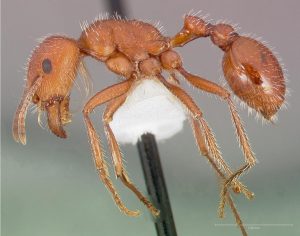
Maricopa harvester ant (Pogonomyrmex maricopa)
Venomous insects are very abundant, and their bites are sometimes quite painful. The most toxic venom found in an insect is that of this Arizona ant that is widespread in the western US and northern Mexico. Fortunately, insects do not usually pose a lethal threat with a single sting, and this is also the case with the Maricopa harvester ant; it takes about 12 stings to kill a rat. Unfortunately, with ants there is rarely a single sting: the insect grabs the victim with its mandibles and repeatedly stings and injects venom, but also secretes a pheromone that attracts the rest of the colony.
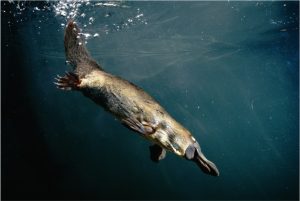
Platypus (Ornithorhynchus anatinus)
The platypus is perhaps an unexpected animal on this list, but the spurs on its hind feet, which the males use for fighting, can deliver a venom that is extremely painful to a human and fatal to a dog. The platypus is one of a rare handful of venomous mammals that includes several species of shrews and their relatives, the solenodons of Cuba and the Dominican Republic.

Hooded pitohui (Pitohui dichrous)
Of the most common large groups of animals, birds may seem the least threatening, the imagination of Alfred Hitchcock notwithstanding. But there is poison among birds too: the pitohui dichrous, found on New Guinea, has several derivatives of the batrachotoxin used by dart frogs in its tissues, including skin and feathers. It is thought to obtain the toxin from its diet as a defence against predators. There are a few other similar cases.
Comments on this publication